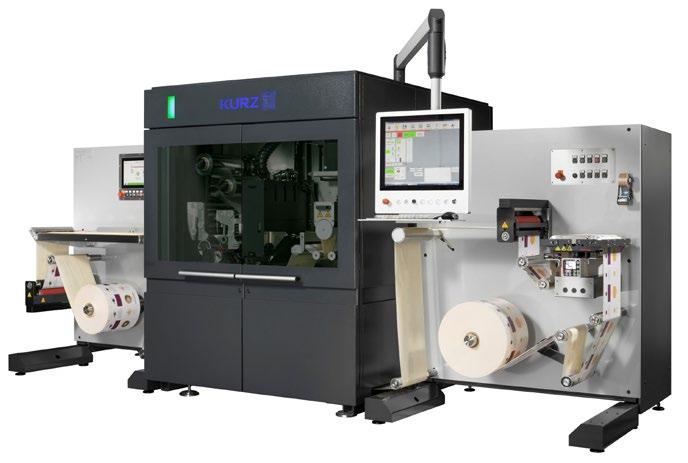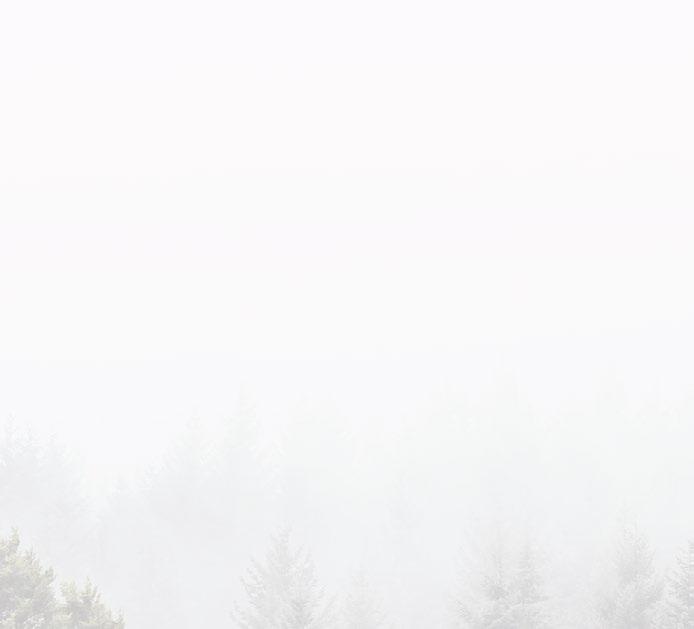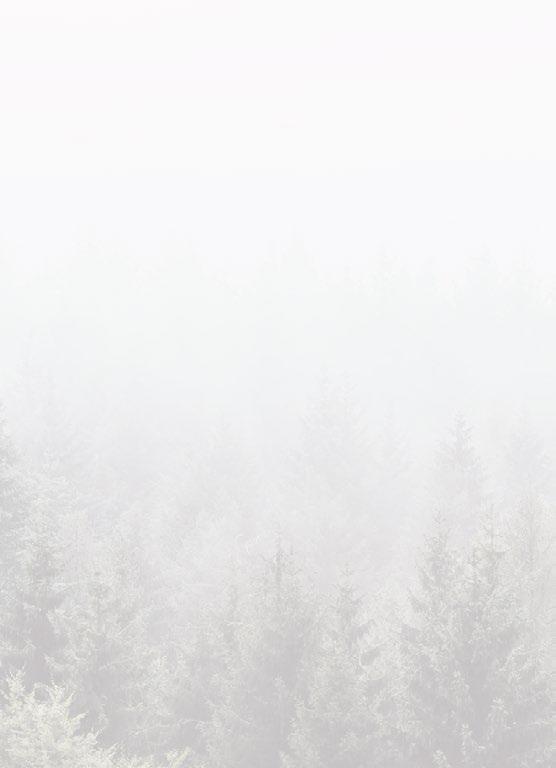
9 minute read
Making beautiful labels
By Neel Madsen, Journalist
It has been said that digital printing is the easy part of making labels, it’s in the finishing process that the real skill comes in. While traditional methods of adding foiling and other special effects to labels still dominate, newer digital finishing technologies can offer more agility, flexibility and sustainability.
Advertisement
erhaps nowhere more so than in beauty, cosmetics and personal care does the label on the product have to convey the brand positioning and attract the target customer. In an overcrowded and highly competitive market, it has to work even harder to call the potential buyer into action.
So, should your brand exude luxury or are you appealing to the ecowarrior? Are you going for the scientific approach or are you promoting certain natural health benefits? Whether you’re aiming for the minimalist look or full-on bling that punches you in the face, your friendly label printing company will have a number of tools in their arsenal to help you. When we talk about digital technology for labels, most will think of the printing process itself, however some label printers are using digital methods to increase the value-add in the finishing process. These new embellishment solutions can enhance labels with foiling and metallics in a variety of colours, high-build varnishes for tactile effects and patterns including braille, spot matt or gloss varnish, and holographic effects, as well as advanced security features.
Digital embellishment Infinite flexibility, faster delivery and increased sustainability are crucial factors that make any type of digitally driven technology, including embellishment techniques, very attractive. When digital methods are deployed, you get full design freedom as files can be amended right up until production starts. Each label can be decorated differently, customised or even personalised for the individual consumer. With no tooling required, there is no waiting around for screens, dies and embossing plates to be made, which speeds up the time to market. And when combined with digital printing, the minimum order quantities can be very low, which is perfect for testing new product lines, releasing limited editions or producing multiple SKUs in short runs. This all adds up to big costs savings and less overall waste.
Just-in-time delivery has become the mantra for many brands and retailers in their quest to stay ahead of the competition. They are not interested in tying up

capital in large amounts of stock and warehousing; they want to maintain a lean and sustainable operation. They certainly don’t want to be throwing away huge quantities of labels when the design needs to change or an SKU is discontinued, because it isn’t selling well.
“The flexibility of ordering what you want, when you want it, is something our customers are getting used to,” says Matt Dass, Joint Managing Director – Innovation, at Springfield Solutions. “Minimum order quantities, storing large volumes of labels and potentially having to write off stock is just not sustainable anymore. We are seeing this more and more on the list of our customers’ considerations when starting a rebrand or new packaging project.”
New investments Springfield Solutions is leveraging its digital expertise to introduce its Digital Label Embellishment solution, which is based around ABG’s DigiJet module and Springfield’s all-digital print capabilities. Most recently, the company has turned its focus to premium packaging for the personal care, beauty and cosmetic sector to offer personalised digital foiling, tactile finishes, spot varnishes, embossing, debossing and more, delivered in just five days.
“The quality is certainly on a par with conventional methods, if not better,” comments Dass. “The speeds are also increasing all the time and set up times are dramatically reduced. If you also factor in no tooling, less write off and less warehousing, then this process can be very cost effective.”
Amberley Labels has just introduced digital embellishment to its portfolio to meet customer demands with the UK’s first Kurz


DM-Jetliner pre-print foiling unit. Managing Director David Richards notes, “We are investing in nextgeneration digital capabilities to continually lead innovation within the decorative labels sector. This is driven by increased customer demand for multi-foil capability in the cosmetics, fragrance and high-end beverage markets.”
“The Kurz DM-Jetliner means we now offer next-generation inline foiling capability and flexibility, with greater colour possibilities and brand control,” adds Richards. “Mass customisation of metallic finishes – variable metallised print and colour – means versatility of design and print. Speed to market is also faster as the supply chain is reduced, and fewer processes are required to get products onto the shelf.”
It’s all about modularity Digital embellishment systems work with toner or inkjet technology, and there are many options for label printers to get into this market. At the high end, there are embellishments webfed presses from the likes of MGI, which can add a tactile effect and foiling to labels, and also print CMYK toner. Xeikon has launched its Fusion Embellishment Unit (FEU), which is based on MGI technology, and HP offers the GEM unit, both as a supplement to their digital label presses for inline finishing, while Kurz has a range of Digital Metal machines that come as inline units or standalone.
Label printers can also choose to expand the reach of their conventional printing press or finishing lines by adding an inkjet print bar or module. Inkjet is a versatile technology that can lay down various fluids either as full coatings or in specified areas to simulate embossing and cold foiling, create a multitude of varnished effects, variable data, 3D warning triangles or security features. This can be done with a very high degree of precision due to the ability of the printheads to lay down varying sizes of drops.
White ink is key in many label applications and print bars can be used as an alternative to flexo or screenprinting to add high-opacity white to short runs of labels. Inkjet modules are well suited to printing the type of very small white text that is often used on beauty and personal care labels.

The Xaar Print Bar System and Domino’s K600i inkjet printer are some of the many modular options on offer. French manufacturer Cartes has just introduced the Jet D-Screen digital unit for its converting lines, which can add all types of embellishments, including tactile varnish up to 800 microns thick for making domed effects.
But digital embellishment is not all about looks. The technology can also be used for a more serious purpose to combat counterfeiting and grey market imports, which are rife in the beauty and personal health industries. Covert security features can be included on the label, helping to verify the authenticity of the brand and identify individual batches. And to make it even harder for criminals, digital can make every product different using algorithms that randomise the security feature, be it an invisible pattern, a microcode or a missing dot over an ‘i’.
Digital embellishment can also be found on combination presses, where digital and conventional types of printing create a hybrid production line that can print, varnish, foil, add special finishes, laminate and cut in a single pass. With inkjet printing now able to match the typical run speeds of conventional flexo, the digital modules are no longer slowing down production, and label
Image p28: Digital Label Embellishment from Springfield Solutions. Image p29: Foil effects created with Kurz Digital Metal technology. Image p30: Improving shelf standout with digital embellishment.








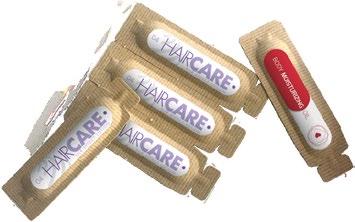





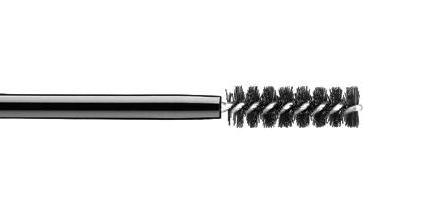
Project development and construction of Form-Fill-Seal vertical machines. Contract-packing service. Customized shape. Monodoses and vials production in recycled plastic material with capacity from 1 ml to 200 ml. Creative marketing, full-service, private label. Filling with liquids, creams, gels, powders and lotions. Material with high barrier, paper, customized molds, one hand opening, stand-up monodose.
printers are able to produce fully converted and rewound jobs in a single shift with one operator. The modularity, agility and speed of this type of production is a good fit for high-end luxury markets.
A sustainable option The sustainability argument for moving to digital embellishment techniques should not be ignored. By printing straight from a digital file without the need to manufacture dies or stamping plates and in essence eliminating several process steps, the method is much more efficient and less wasteful. The overall carbon footprint is also reduced by the fact that there is no transport of tooling or storage to take into consideration. Less storage needs also mean less energy consumption. A less wasteful foiling method from ACTEGA Metal Print is EcoLeaf where an ultra-thin layer of metal pigments is fused to a printed image from either flexo, screen or inkjet by curing it under a UV lamp. The metallic pigments that don’t make it onto the image are picked up and recirculated in the system for use in the next image, so no pigments are going to waste.
Set-up waste is also minimal in digital embellishment systems compared to traditional printing and converting, where often many metres of labels have to be discarded while the print, foiling or spot varnish elements come into register. Jobs can be changed on the fly, which saves time and materials usually needed when the machine is stopped, and the new job set up manually.
The digitalisation of label manufacturing continues at pace and the sophistication of the various technologies will suit brands in the beauty, cosmetics and personal care sectors, which are known for their complex label and packaging requirements. And with more products bought online than ever before, we can expect brands to exploit digital embellishment technologies much further to get the attention of consumers in the virtual world too.
